One woman based in the United Kingdom is warning people of a strange finger test for lung cancer. Individuals would look for a phenomenon called ‘finger clubbing.’ Emma Norton, an oncology nurse advisor, says most people don’t know about this unusual sign, and wouldn’t know to check for it [1]. Checking your fingers for signs of clubbing is called the Schamroth window test.When touching the nails of your index fingers together, there should be a very small space, roughly the shape of a diamond, between your cuticles. If there’s no such space, your fingers could be clubbed, which could be indicative of adverse health conditions in the body, including lung cancer.Finger clubbing usually happens in both fingers but could happen in just one [2]. Fingers can look swollen or the nail may be curved in an almost beak-like way. People with finger clubbing, such as another woman in the UK, have received lung cancer diagnoses, but it’s not the only condition that problems with your fingernails can tell you. Here’s what you need to know about finger clubbing as well as how you can effortlessly conduct the Schamroth window test on your own at home.What Is Finger Clubbing?Finger clubbing (sometimes referred to as digital clubbing) is when the ends of your fingers swell up. It could present as widened fingers, a downward curve to your fingernails, or what looks like swollen tips of your fingers. This swelling is what eliminates the diamond-shaped gap between your cuticles, which is apparent during the Schamroth window test. It typically doesn’t happen overnight, instead occurring in stages.The bed of your nails—the lighter part of your nail near your cuticles—will become softer and shinier, which is suspected to be the result of fluid buildup. The nail curve isn’t always obvious, but looking at your nails from the side can give you a better look (the curve of the nail in this way is referred to as Scarmouth’s sign). As the condition progresses, your fingers may appear larger from the fluid collection and swelling, especially at the ends of your fingers.Read More: New Research Says Honeybees Can Detect Lung Cancer In HumansNext PageFinger Test For Lung Cancer Could Determine Cancer Risk3 Easy Steps to Do the Schamroth Window Test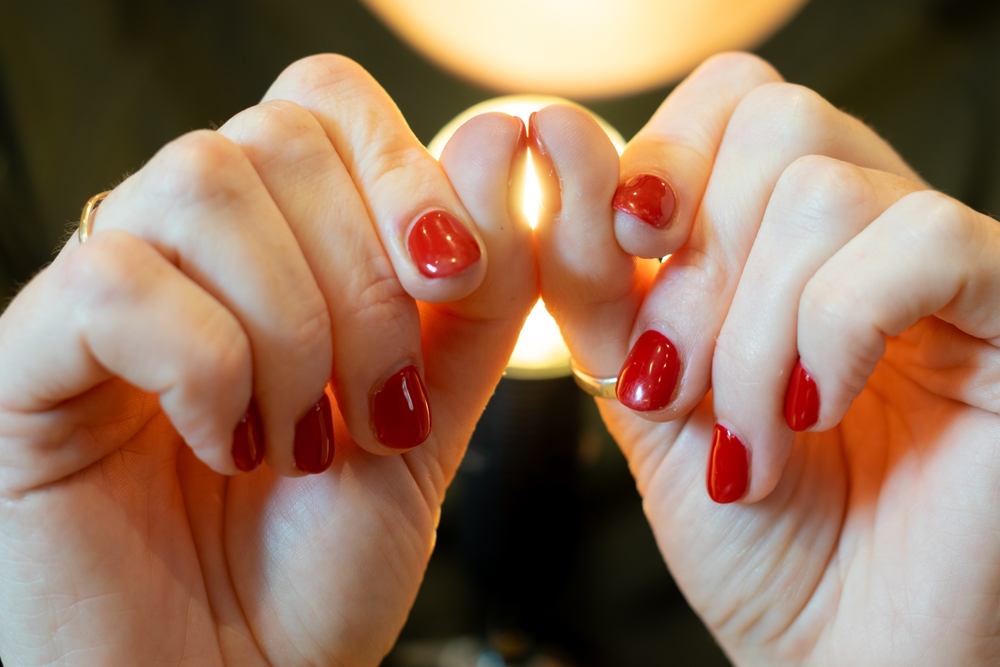 Source: ShutterstockDoing the Schamroth window test is easy, and only takes a few seconds on your own at home:Put your hands up in front of youTouch the tips of your index fingersMake nails touch by bending the tops of fingersYou should see a small diamond-shaped gap beneath the nail beds. If there’s no gap, means your fingers are clubbed, and you should follow up with your doctor as soon as possible. Your physician may suggest further diagnostic efforts to determine what the issue is.Finger Test For Lung Cancer Could Determine Cancer RiskDoes It Really Mean You Have Lung Cancer?
Source: ShutterstockDoing the Schamroth window test is easy, and only takes a few seconds on your own at home:Put your hands up in front of youTouch the tips of your index fingersMake nails touch by bending the tops of fingersYou should see a small diamond-shaped gap beneath the nail beds. If there’s no gap, means your fingers are clubbed, and you should follow up with your doctor as soon as possible. Your physician may suggest further diagnostic efforts to determine what the issue is.Finger Test For Lung Cancer Could Determine Cancer RiskDoes It Really Mean You Have Lung Cancer? Source: ShutterstockEven if your fingers are clubbed, it doesn’t automatically mean you have lung cancer. Finger clubbing has also been associated with [3][4]:Congenital heart disease. Present at birth, this condition causes an issue with the actual structure of the heart, which can affect blood flow [5].Infective endocarditis. A rare, life-threatening infection of the endocardial surface of the heart [6].Other lung issues. Such as a lung abscess, which is caused by an infection (sometimes even gum disease!) [7], and bronchiectasis, in which the airways are scarred or damaged, which can occur from lung infections, autoimmune disorders, or allergic reactions [8].Inflammatory bowel disease. IBD encompasses both Crohn’s disease and ulcerative colitis, both of which involve chronic inflammation of the gastrointestinal (GI) tract [9].Finger clubbing has even been known to be an early sign of acquired immune deficiency syndrome (AIDS) in patients who have human immunodeficiency virus (HIV) [10]. Read More: 10 Warning Signs of Lung CancerFinger Test For Lung Cancer Could Determine Cancer RiskOther Fingernail Conditions and What They Could Reveal
Source: ShutterstockEven if your fingers are clubbed, it doesn’t automatically mean you have lung cancer. Finger clubbing has also been associated with [3][4]:Congenital heart disease. Present at birth, this condition causes an issue with the actual structure of the heart, which can affect blood flow [5].Infective endocarditis. A rare, life-threatening infection of the endocardial surface of the heart [6].Other lung issues. Such as a lung abscess, which is caused by an infection (sometimes even gum disease!) [7], and bronchiectasis, in which the airways are scarred or damaged, which can occur from lung infections, autoimmune disorders, or allergic reactions [8].Inflammatory bowel disease. IBD encompasses both Crohn’s disease and ulcerative colitis, both of which involve chronic inflammation of the gastrointestinal (GI) tract [9].Finger clubbing has even been known to be an early sign of acquired immune deficiency syndrome (AIDS) in patients who have human immunodeficiency virus (HIV) [10]. Read More: 10 Warning Signs of Lung CancerFinger Test For Lung Cancer Could Determine Cancer RiskOther Fingernail Conditions and What They Could Reveal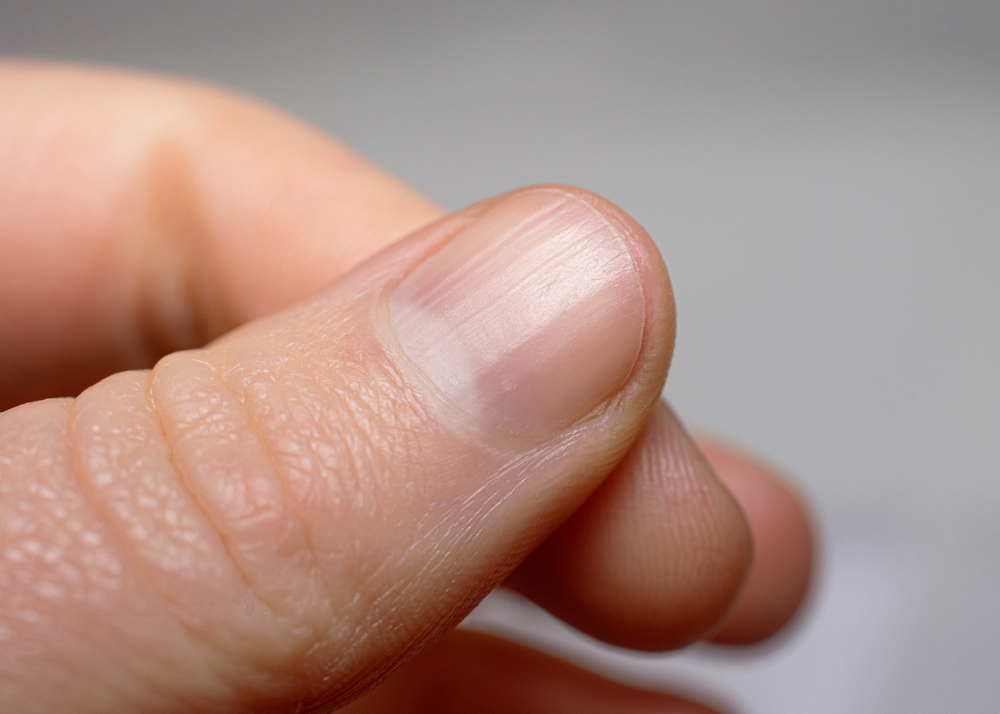 Source: ShutterstockFinger clubbing isn’t the only finger sign that can point to other health conditions in the body. In fact, our fingernails can reveal a surprising amount of information about our health. Just a few of the many fingernail signs that could be indicative of an underlying health condition include [11]:Koilonychia
Source: ShutterstockFinger clubbing isn’t the only finger sign that can point to other health conditions in the body. In fact, our fingernails can reveal a surprising amount of information about our health. Just a few of the many fingernail signs that could be indicative of an underlying health condition include [11]:Koilonychia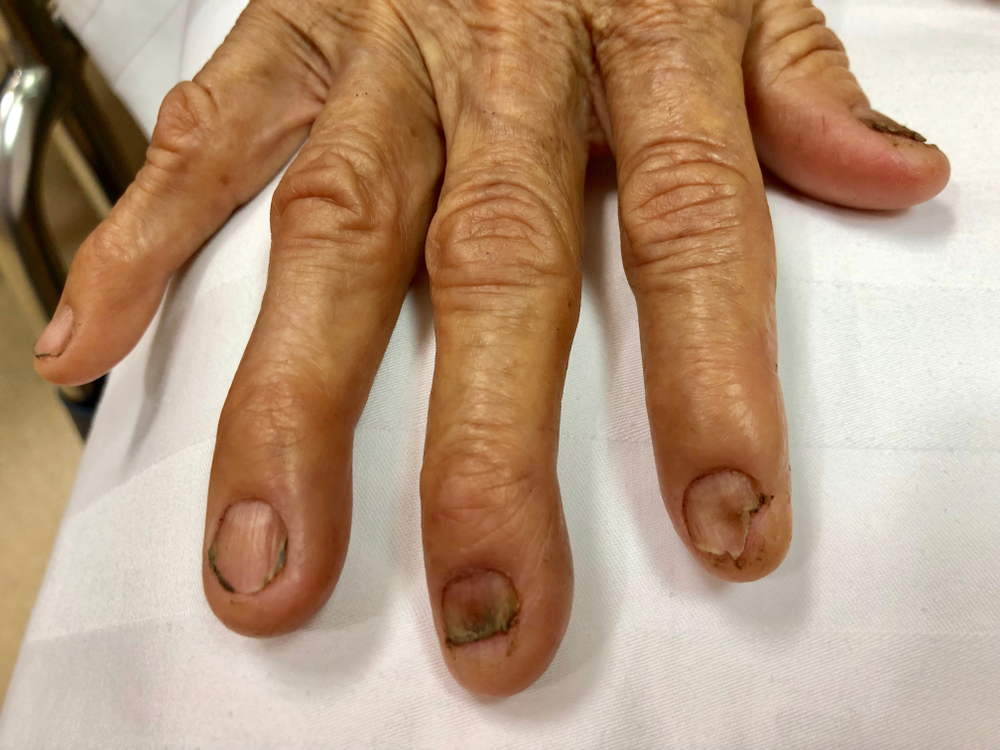 Source: ShutterstockThis term refers to nails that are concaved, or have a spoon curvature to them due to a depression in the middle. Koilonychia occurs in children and could be the result of:An iron or protein deficiencyExposure to petroleum-based solvents, which contain toxic chemicals [12]LupusThin or Brittle Nails
Source: ShutterstockThis term refers to nails that are concaved, or have a spoon curvature to them due to a depression in the middle. Koilonychia occurs in children and could be the result of:An iron or protein deficiencyExposure to petroleum-based solvents, which contain toxic chemicals [12]LupusThin or Brittle Nails Source: ShutterstockThese nails may break easily or appear very thin, and could be indicative of:Metabolic bone diseases, such as osteoporosisThyroid disorders, such as hypothyroidism or hyperthyroidismMalnutritionBeau’s Lines
Source: ShutterstockThese nails may break easily or appear very thin, and could be indicative of:Metabolic bone diseases, such as osteoporosisThyroid disorders, such as hypothyroidism or hyperthyroidismMalnutritionBeau’s Lines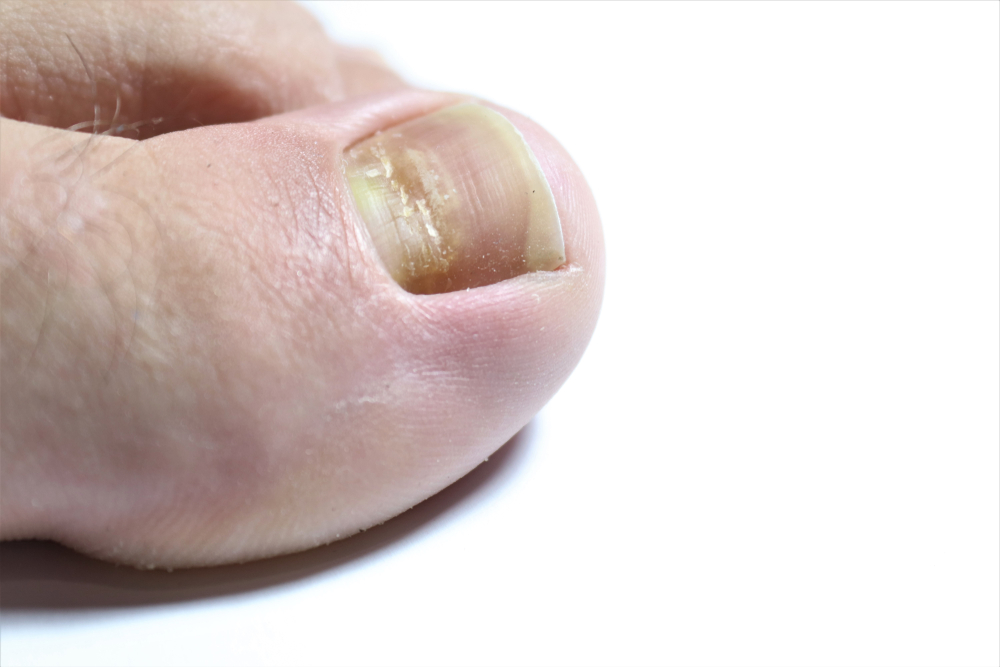 ource: ShutterstockThese lines could appear as indents or white lines that span the width of your nail. They typically signal a severe illness that has already happened. For example, Beau’s lines could be the result of previous conditions or treatments such as:Severe infectionMyocardial infarction (heart attack)Shock or sepsisChemotherapySevere zinc deficiencyWhat’s interesting about Beau’s lines is that their position on the nail can reveal the approximate date of the illness, and the depth of the lines could allude to the severity of the condition.Rough Nails
ource: ShutterstockThese lines could appear as indents or white lines that span the width of your nail. They typically signal a severe illness that has already happened. For example, Beau’s lines could be the result of previous conditions or treatments such as:Severe infectionMyocardial infarction (heart attack)Shock or sepsisChemotherapySevere zinc deficiencyWhat’s interesting about Beau’s lines is that their position on the nail can reveal the approximate date of the illness, and the depth of the lines could allude to the severity of the condition.Rough Nails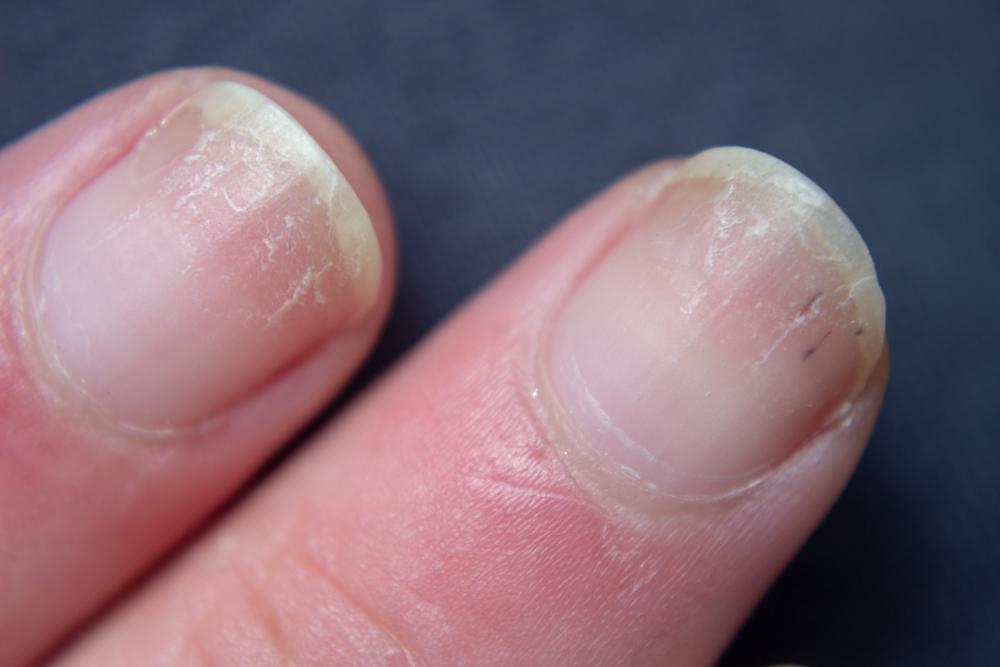 ource: ShutterstockThese nails may appear dull instead of having their characteristic natural shine, or almost look as if they were sandpapered. Rough nails could indicate:An autoimmune diseaseExposure to toxic chemicalsPsoriasis, which is a skin condition resulting in rough or scaly patches of skin
ource: ShutterstockThese nails may appear dull instead of having their characteristic natural shine, or almost look as if they were sandpapered. Rough nails could indicate:An autoimmune diseaseExposure to toxic chemicalsPsoriasis, which is a skin condition resulting in rough or scaly patches of skin

See more—find out what happened next below! 👇👇👇


